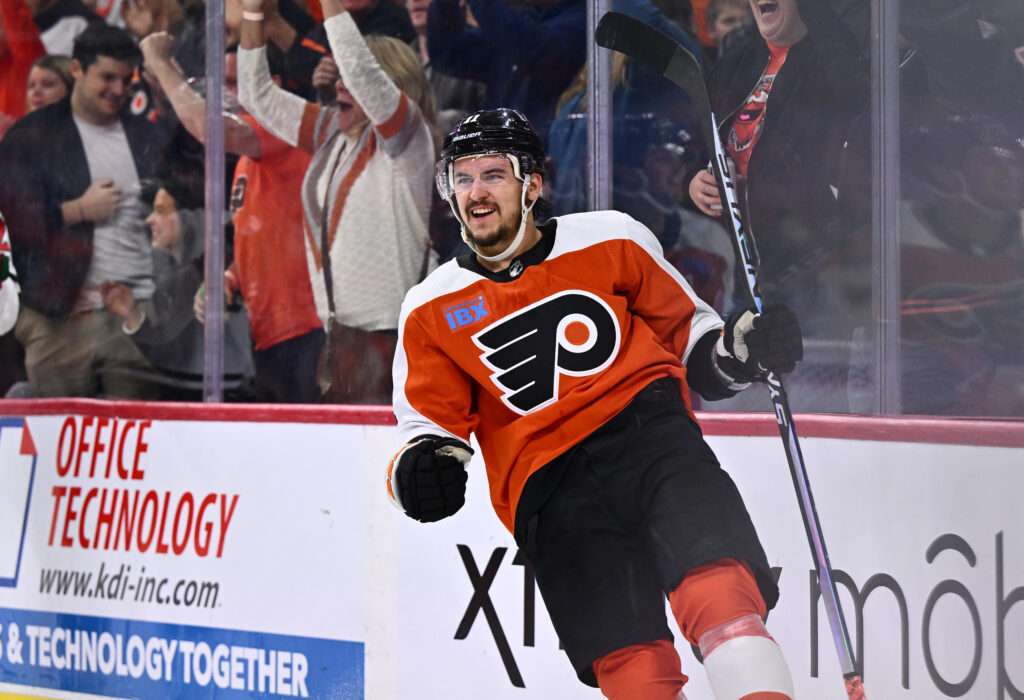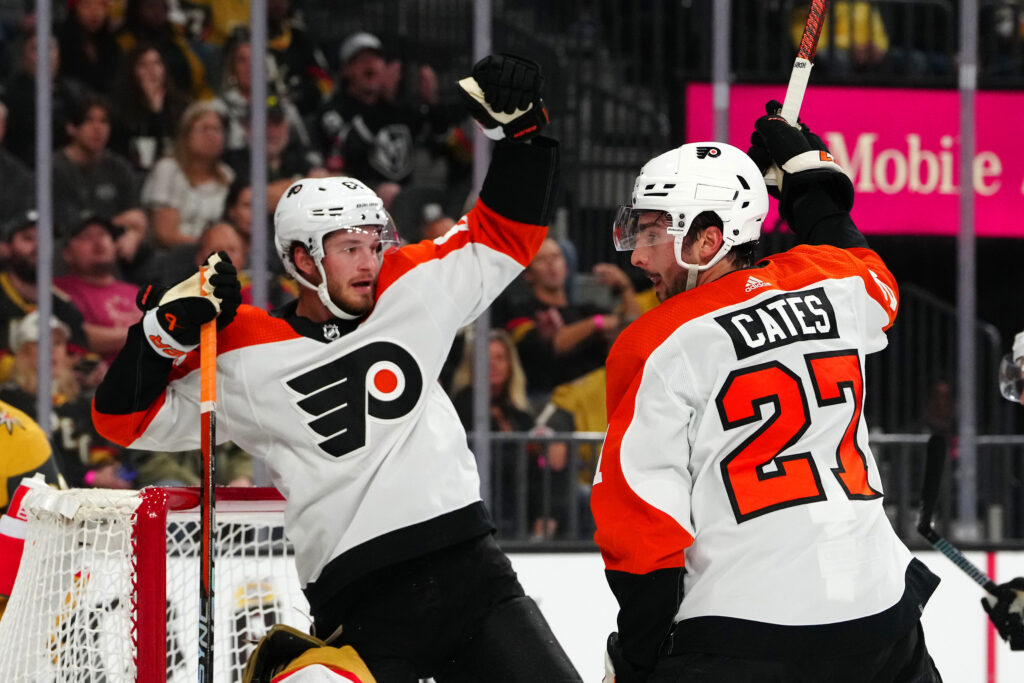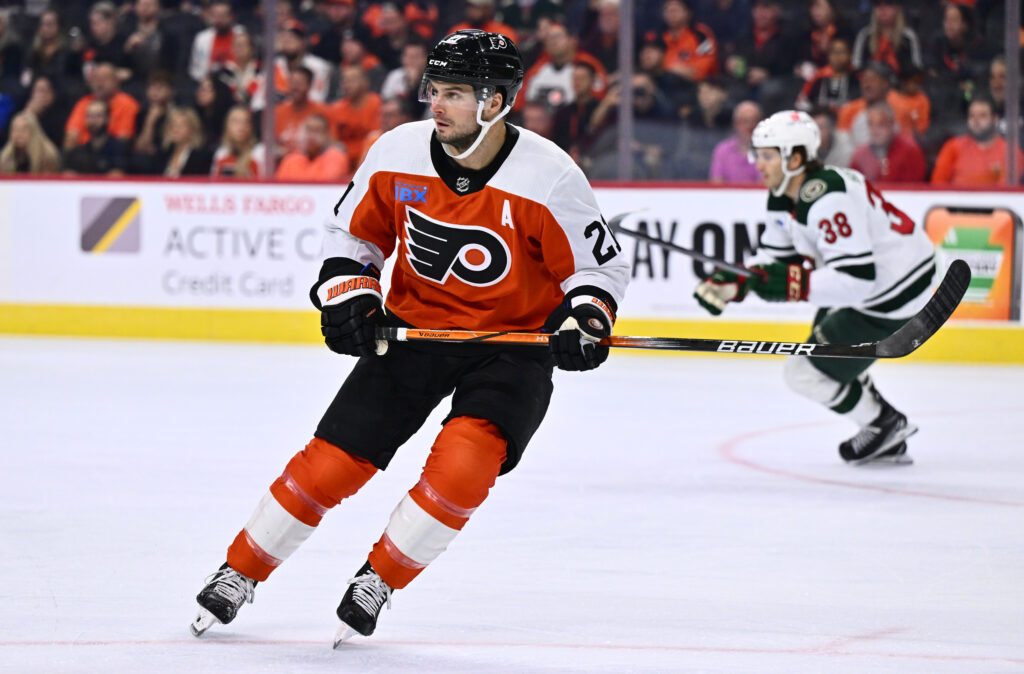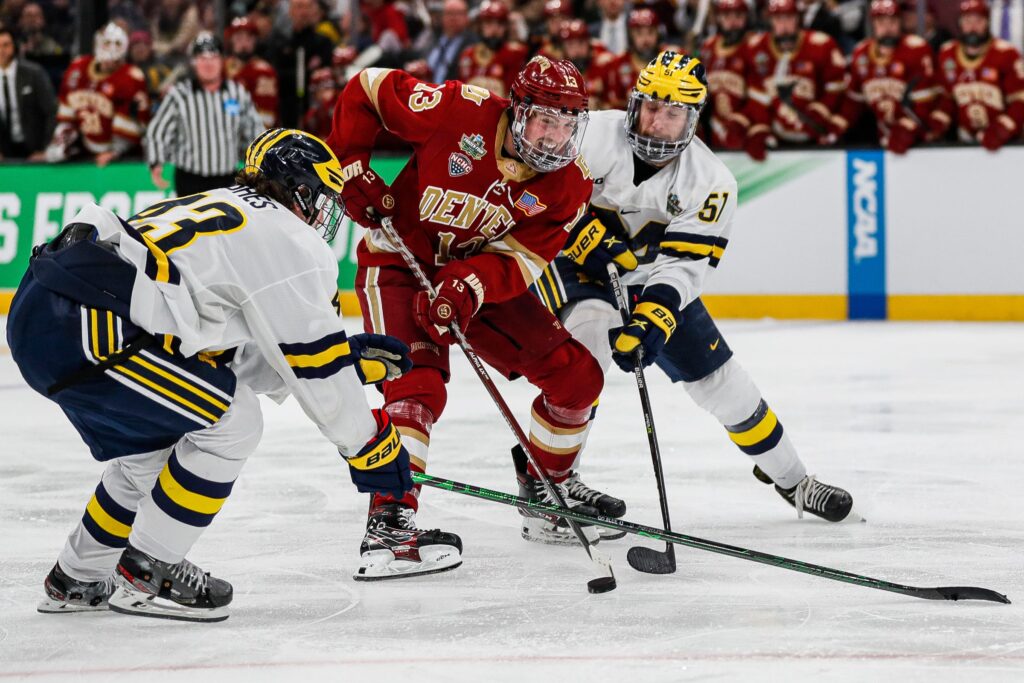© 2025 ALLCITY Network Inc.
All rights reserved.

I may be writing for a new venture now. But the monthly Flyers Mailbag lives on.
It’s going to be almost identical to my mailbag articles at The Athletic — deep dives into as many questions as I can answer while keeping the article remotely readable. Some things, luckily, never change.
But there will be one key difference. My current plan is for the Mailbag (expect it near the start of each month) to come in two parts. Part 1 will solely be questions gathered from Twitter, or other social media sources, and will be accessible to all. Part 2, however, will be a Diehard-only Mailbag. Not only will it be accessible only to Diehard members, it will be almost exclusively consistent of questions from those Diehard subscribers, left in our Discord channel. Basically — if you want to be sure your question will be answered, become a Diehard! At least for now, it gives you basically a 100 percent chance I’ll include it in a mailbag.
Today is Part 1, the all-access mailbag. Onto the questions:
Questions have been edited for clarity.
@FlyGoalScoredBy: Charlie, what part of the early Flyers season warrants the most praise? Which part warrants the most concern?
For me, the most praiseworthy development has been their ability to legitimately control play at five-on-five, despite their roster flaws.
The teams that drive play and both outshoot and outchance the opposition tend to either have line-carrying studs up front, or a deep, balanced, puck-moving blueline that excels in transitioning play from defense to offense. The Flyers have neither. The forward corps lacks stars, and as for the blueline group, it entered the season on paper looking like one of the weaker groups in the league. Travis Sanheim as a No. 1 after an awful season? 22-year old Cam York on the top pair? 37-year old Marc Staal and salary cap castoff Sean Walker in key roles? Come on.
Yet it’s worked. To his credit, John Tortorella has the forwards taking more risks than last year, and to the forwards’ credit, they’ve done so without completely jettisoning the defensive soundness so emphasized in 2022-23. Sean Couturier and Cam Atkinson also haven’t missed a beat in their returns to action, a development with both short-term and long-term positive implications for the club. Travis Konecny is proving that 2022-23 was no fluke offensively, and Bobby Brink has shaken off a rough developmental season last year and now looks very much like a viable NHL scoring winger.
And as for the blueline corps, it’s been surprisingly solid. The York-Sanheim duo has helped the Flyers control a stellar 58.41 percent of the expected goals at five-on-five. Walker has been a revelation and appears very much in the midst of a bounceback season. Youngster Egor Zamula has held his own, even if mistakes are happening a bit more frequently now than they did over the first few games.
It’s still not a great group. But it’s functional. That’s a testament both to the work of the players and the efforts of the coaching staff to squeeze as much as possible out of a limited six-man group.
As for the most concerning development? I guess one could point to a few specific players who have disappointed thus far — Sam Ersson and Tyson Foerster come to mind — but ten games isn’t enough for me to write either of those guys off. It’s equally difficult for me to pick out Morgan Frost as a disappointment, given the fact that the coaching staff really hasn’t given him much of a chance. If he’s still scuttling after 20 games played, I’ll criticize Frost. But not yet.
Instead, I’ll go with a collective entity: the power play. It currently sits 28th by efficiency (11.4 percent), and their shot and chance creation metrics are, in short, horrific. They’re averaging just 78.56 shot attempts per 60 minutes at five-on-four, which isn’t merely dead-last in the league, it’s over seven attempts behind the 31st-ranked club. As for expected goals, they’re merely 29th. It’s an awful power play by every measurement.
@Fortunaught1: How has the lack of PP execution not been at the forefront of every postgame presser? It’s not simply the lack of quality shot production, but sheer lack of organizational competence that baffles me. I realize it brings with it thorny conversations about skills, but whatever.
This is a worthwhile question, for two reasons: the (justified) frustration with the power play, and the reasoning behind asking specific questions to the coach.
Let’s start with the latter. I get the sense that some fans believe postgame press conferences and media availabilities are when reporters should take on the voice of the fan, and rake the club over the coals publicly for whatever is most infuriating them at that moment. And to be sure, holding the team accountable is an important job for a beat writer. Tough questions should be asked. But first and foremost, I ask question in postgame pressers because I’m legitimately interested in what the answer might be, and because I think it may add color and depth to a looming article — not because I’m looking to pick a fight.
Asking different variations of “why does the power play still stink?” every press conference may be cathartic for fans, hoping to see Tortorella squirm as he tries to defend his players and assistant coach Rocky Thompson in front of cameras. But it’s just not likely to result in an intriguing answer. Tortorella isn’t going to say “my players aren’t talented enough,” even though that’s part of the problem. He isn’t going to respond “Rocky is screwing up,” even if his assistant clearly hasn’t yet been able to unlock the units’ maximum potential with the right formations and tactics. Instead, we’re going to get hockey truisms about putting more pucks on net, and making more plays — because that’s what we always get. I only have so many questions I can ask in a postgame presser, and I’d rather use my time to try and get enlightening answers from Tortorella, not canned quotes.
As for the power play itself, as noted, it’s a mess. The talent issue is very real, and it’s my belief that the PP won’t be truly fixed until the Flyers have a star-level forward around which the rest of the top unit can revolve, whether it be a playmaker or a truly feared shooter. But this team doesn’t lack for quality forwards. Foerster should be getting more opportunities to use his high-end shot, and it’s not like Travis Konecny, Owen Tippett and Cam Atkinson lack plus wristers. They have puck-battle winners with skill in Sean Couturier and Noah Cates. There are pure playmakers in Morgan Frost and Bobby Brink. I don’t expect the Flyers’ power play to be great, but it really shouldn’t be this bad.
Does Thompson deserve criticism for that? Absolutely. He has a tough task in front of him when it comes to improving the Flyers’ power play, but I don’t believe it’s an impossible one.
@michaelkinky: Who is the Flyers current most valuable trade chip and what is a quasi-recent comp for value? Should be a player the Flyers are reasonably willing to move.
First, let’s start out with the players who general manager Daniel Briere could at least in theory be convinced to move over the next nine months: Travis Konecny, Cam Atkinson, Scott Laughton, Morgan Frost, Sean Walker, Nick Seeler, Marc Staal, and Carter Hart.
Out of that group, it’s pretty clearly Konecny who would bring back the most in a trade.
Maybe you get a late first for Laughton from a team that believes he is the necessary glue guy they need for a Stanley Cup run. Perhaps Walker could be in that same price range if he continues to stand out and a bidding war emerges for a quality RHD on an expiring contract with a cheap cap hit ($2.65 million). Atkinson is putting himself back on the radar as a desired trade piece, especially if the Flyers were willing to retain salary. And maybe Hart becomes a valued asset around the league once again if he’s officially cleared of involvement in the Hockey Canada sexual assault scandal. The Flyers don’t lack desired veteran players.
But Konecny right now easily tops the list. He’ll be just 27 in March, he has 39 goals in his last 70 games, and is on a reasonable $5.5 million cap hit. He wouldn’t even be a rental if he was dealt at the trade deadline; he’s under contract through 2024-25. The price of admission to even get into the Konecny bidding should start at a first round pick, and then negotiations would be about what else needs to be added to get a deal done.

As for comparables? While I suspect both are a bit ambitious, I don’t think the Flyers would be crazy to suggest that teams look at the returns for Pierre-Luc Dubois and Alex DeBrincat as models for a Konecny offer. Dubois was 25 with one additional year of team control coming off two straight 60-ish point seasons when he was dealt for an A-level young player (Gabriel Vilardi), a B-level youngster (Rasmus Kupari), a quality roster player (Alex Iafallo) and a second round pick this past summer. DeBrincat brought back a first, second and third round pick two summers ago at 24 with two years of team control remaining, coming off a 41-goal campaign.
Now, Dubois is a center and was younger than Konecny when traded; DeBrincat was significantly younger as well. Konecny would bring back less than both if the Flyers ultimately decided to move him. But in my estimation, he’s at least in their ballparks.
@MigueIDante: If Sean Walker continues to play well in the next months, is a two-to-three year extension possible? Right now he is the only top-four level RHD who can help the young core in the D and bring some offense (Risto can’t).
Interesting question. Walker absolutely has been impressive thus far, with four points in ten games and strong underlying metrics (+0.088 impact on xG differential at even strength, which would have put him in the 69th percentile among NHL d-men last season). He’s justifiably turned himself into a staple of the club’s top-four, which has been especially valuable given Rasmus Ristolainen’s continued absence from the lineup.
At age 28 (29 in November), he’s not that old, and he probably won’t break the bank on an extension, given his struggles over the previous two seasons. It’s not a wild idea. I could easily see Briere viewing Walker as something of a “Bridge to Bonk” (2023 first rounder Oliver Bonk) and offering him a term in the range you suggest.
Personally, however, I’d trade him. It would be exceptionally shrewd asset management, shipping out a player for further assets who was essentially acquired for free just a few months earlier and adding to the overall haul from the Provorov deal. Also, in my opinion, it’s should be a top organizational priority to add a third first round pick for the 2024 draft, especially because of the apparent on-ice progress the team has made so far. This very well could be the last “stock up via the draft” year before the Flyers start taking clear steps forward, and I believe they need to take full advantage. Maybe Walker — assuming he continues to play really well — could help them get that extra first.
But I don’t think it’s out of the realm of possibility that Briere disagrees, especially if the market at the trade deadline for Walker is relatively cool. And if the Flyers themselves are still in the bubble playoff mix come deadline season? Then all bets are off.
@Flyersfan39: Thoughts on Scott Laughton and Joel Farabee? Both seem a bit rusty still to me.
Let’s start with Farabee, because I couldn’t disagree more that he still looks rusty.
To me, Farabee is very much passing the eye test. He looks faster. He looks stronger. And he’s showcasing impressive early chemistry in the offensive zone with Brink, which is exciting both in the short-term and the long-term.

As for the numbers, we’re talking about someone who has five goals in ten games — that’s a 40+ goal pace over 82 contests if his continues. Even more encouraging are his early-season advanced metrics, as the Flyers have generated a fantastic 69.57 percent of the expected goals with Farabee on the ice at five-on-five thus far. His +0.241 impact on xG differential (per Evolving-Hockey’s RAPM model) would have ranked him in the 76th percentile among forwards last season. Farabee to me is taking a massive step forward in the early going, and Tortorella seems to be onboard as well.
“In the big picture for me, I think he can be a complete player,” Tortorella said on Wednesday. “Not a defensive guy, I think Joel can do both. I think he’s gonna be able to help us away from the puck last minute protecting a lead, and also be a guy that I can use when we pull the goalie to try to score a goal. Hasn’t come to fruition yet, but I think that’s what I foresee here.”

The Laughton skepticism I understand more. Six points in ten games really isn’t bad, but he had no goals thus far, and he hasn’t passed the eye test for me in the same way Farabee has. It’s not that he’s been bad — just that his shift-over-shift impact hasn’t been as glaringly obvious. Add in the fact that he’s a little bit older (29) and therefore doesn’t fit quite as seamlessly into a long-term rebuild timeline as most of the current forward corps, and I get the sense some people are keeping a closer eye on him than they would otherwise, and aren’t super impressed at what they’ve seen.
But by the numbers, he’s basically just been Scott Laughton. Thus far, he has a 1.98 Points/60 rate at five-on-five; over the previous four seasons, he’s posted a 1.61. As for play-driving, he’s had a +0.076 impact on xG differential; from 2019-20 through 2022-23, his impact has been +0.062. If anything, he’s been a little bit better thus far than his established career norms.
Basically, Scott Laughton remains Scott Laughton — a useful depth forward who on a great team is probably the ninth or tenth best forward, but can be a top-nine staple on a lesser club.
@TheBoysinOrange: Curious of your opinion of Massimo Rizzo as a prospect? Seems like a top-10 prospect in the Flyers organization, but some are saying to temper expectations due to playing in college at this age.
For those who don’t pay close attention to prospects, Rizzo — who the Flyers received as unofficial compensation from the Carolina Hurricanes this summer in the Tony DeAngelo “trade” — has been on an absolute heater for the University of Denver thus far, with 14 points in just six games.

It’s going to catch the attention of fans. That being said, I’m naturally a bit skeptical here, for a few reasons.
First, there’s the simple fact that Carolina essentially gave up on him after a very strong sophomore campaign from a points standpoint (46 points in 38 games), and they’re far from a foolish organization. The conversations I had with scouts in the wake of the trade hinted at Carolina’s thinking behind relinquishing Rizzo: the industry consensus was that he projected more as an AHL/NHL tweener at best, lacking the kind of physical traits or pace to his game to allow him to score at the NHL level. Perhaps Carolina was leaning towards not offering him a contract upon graduation, and that’s why they made him available in the DeAngelo machinations. It would certainly fit with the summer sentiments of the scouting community.
Has his early surge changed perceptions of Rizzo? It certainly hasn’t hurt him. Rizzo is already 22, and that needs to be taken into account (he’s on the old side for a college junior), but two points per game in a quality conference like the NCHC can’t be brushed aside easily. At the very least, the Flyers should plan to sign him either this summer or next, and see for themselves if his offensive abilities translate to the pro level.
I still wouldn’t put Rizzo in my personal top 10 ranking of Flyers prospects, even if Brink, Ersson and Emil Andrae have graduated our list by the time the next edition comes out in February. But he’s absolutely in the top-20, and the longer he keeps up this ridiculous scoring surge, the higher he’ll land.
@OksergCram: In the next draft, are you taking a 1D or a 1C?
Depending on where their draft picks end up, why not both?
In all seriousness, I’d probably lean defense unless the Flyers have a chance at Macklin Celebrini. There’s shaping up to be as many as five or six defensemen int his draft with top-pair potential. If the Flyers end up selecting in that range, I fully expect them to try to nab the No. 1 blueliner that the group glaringly lacks, and I think they’d be right to do so.
But perhaps the Flyers can find a way to do both. They have Florida’s first round pick as long as it doesn’t land in the top-10, and right now that pick would be 23rd if the season ended today. Let’s say they hit the draft with something like the eighth and 18th picks. The hope would be that one of the top-tier blueliners (Artyom Levshunov, Anton Silayev, Adam Jiricek, Sam Dickinson) slips to eight, and then maybe you could use the Florida pick plus another player asset to jump up and take a run at a non-Celebrini center like Berkly Catton or Cayden Lindstrom (or even Ivan Demidov, if he slips due to the Russia factor and they think he projects as a center).
Aggressive? Sure. But they’re stockpiling assets for a reason, and not every player is going to fit, both in terms of roster realities and the rebuild timeline. I’d be looking to be very active at this draft in trying to add another first and/or move up.

@fakehockeyteam: Do you think Cates will recapture the Selke-lite performance he had last year? He seems to have regressed a bit — could it just be summer rust or adjusting to new lines?
Noah Cates is having an odd start to the season, so he’s certainly worth highlighting.
I get the frustration regarding his early defensive play, especially after making third period d-zone errors in consecutive games that have led to backbreaking goals against. While I’m still seeing the same relentless forechecker and backchecker as last year, his plays with the puck under pressure in the defending third of the ice have been inconsistent.
The numbers even show it — after ranking second among all NHL forwards last season in even strength defensive xG impact, his current basically break-even impact of -0.009 would have ranked him merely in the 46th percentile when it comes to defense. Cates is capable of a lot better than that.
But the flip side is that his offensive impact rates have gone through the roof. We’re talking about jumping from the 12th percentile (-0.154) to what would have been the 64th percentile (+0.095) if we compare his current 2023-24 performance to last year’s leaguewide results. And that fits with Tortorella’s mandate both to Cates specifically and the forwards as a group, to take more risks and not be quite as focused on defense as before.
I think what we’re seeing now from Cates is a player trying to find the right balance in a more risk-friendly Tortorella system, who also has happened to make a few especially memorable early errors. Give it two months or so. I suspect Noah Cates will figure it out.
All metrics courtesy of Evolving-Hockey and Natural Stat Trick.
Comments
Share your thoughts
Join the conversation




